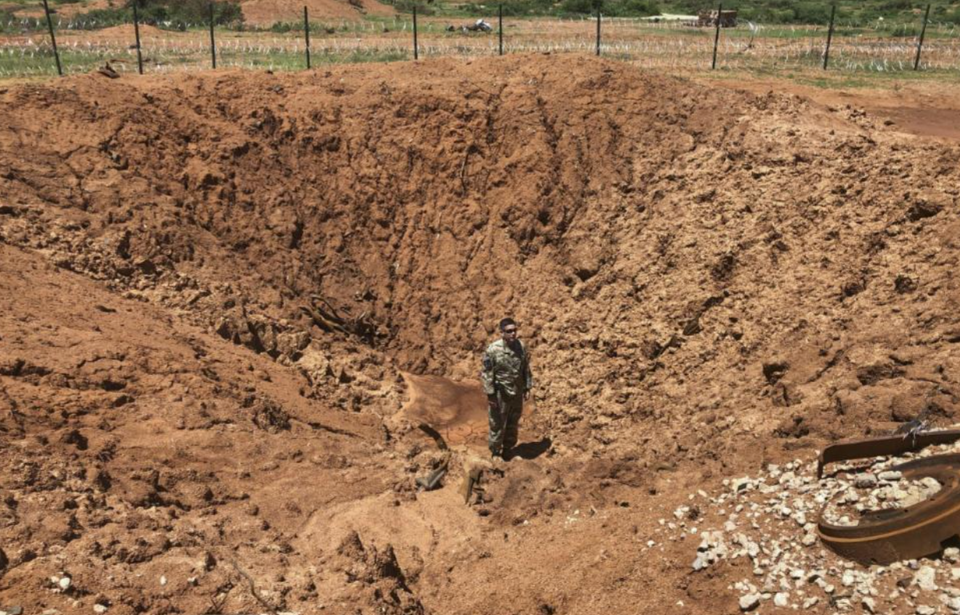The September 2019 battle at Baledogle Military Airfield marked a major confrontation between U.S. forces and al-Shabaab, an al-Qaeda-affiliated terrorist organization designated as such by the U.S. Department of State. Soldiers from the 102nd Cavalry Regiment of the New Jersey Army National Guard were deployed to Somalia to train and advise partner forces but found themselves in direct combat when al-Shabaab launched a coordinated assault on the airfield.
Despite being under heavy fire, the American and Somali forces repelled the attack with remarkable coordination and resilience. No U.S. troops were killed, and al-Shabaab suffered significant casualties. This engagement was the largest between U.S. forces and al-Shabaab since the infamous Battle of Mogadishu in 1993 (also known as Operation Gothic Serpent), underscoring the persistent threat the group poses in the region—and the continued U.S. military presence aimed at countering extremist activity in East Africa.
History of Baledogle Military Airfield

Baledogle Military Airfield is located about 60 miles northwest of Mogadishu in Somalia’s Lower Shabelle region. It was originally built by the Soviet Union in the 1970s to support Soviet personnel and the Somali Air Force. From 1993 to 1995, the U.S. 10th Mountain Division was stationed there as part of UN Operations in Somalia II (UNOSOM II).
Since 2007, the United States has maintained an almost constant presence in Somalia as part of the Global War on Terrorism. Baledogle is one of the most remote U.S. military bases in the region and is surrounded by ongoing threats. To keep the base and nearby areas secure, a Special Operations Task Force is regularly deployed there, along with private security contractors from Bancroft.
The 102nd Cavalry Regiment was prepared for a potential attack
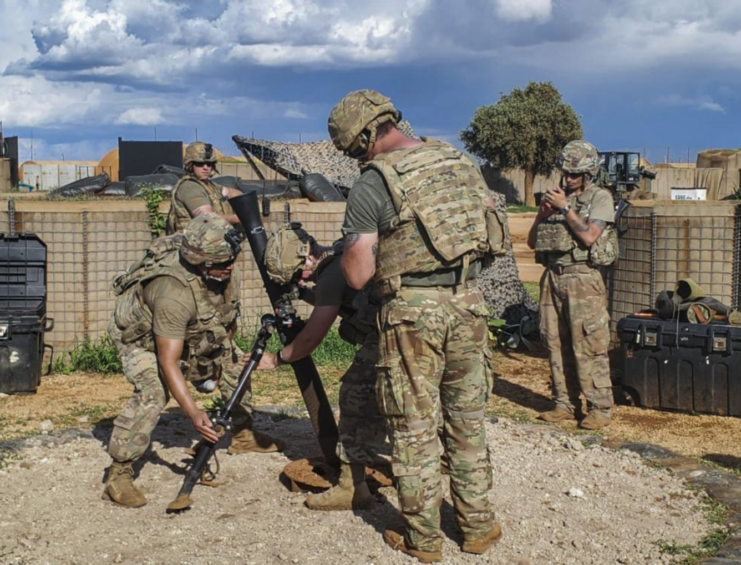
In 2019, the soldiers of Charlie Troop, 1st Squadron, 102nd Cavalry Regiment were sent to Somalia as part of Task Force Warrior, a mission that supported U.S. military efforts and helped the Somali people.
Before deployment, the original 70-person unit was strengthened with more troops. Fire direction officers from the 3rd Battalion, 112th Field Artillery Regiment and a mortar platoon from the 2nd Battalion, 113th Infantry Regiment joined them. By the time they arrived in Somalia, the group had grown to 160 soldiers.
At Baledogle Military Airfield, they knew an attack from al-Shabaab was likely—it was just a matter of when. The militants often watched the base, checking its defenses and observing how U.S. troops responded. To prevent them from learning too much, the 102nd Cavalry was ordered not to return fire.
To stay prepared, the soldiers ran regular live-fire exercises, trained for different types of attacks, and carried out their own patrols—all while rotating shifts on guard duty.
al-Shabaab militants launch their attack
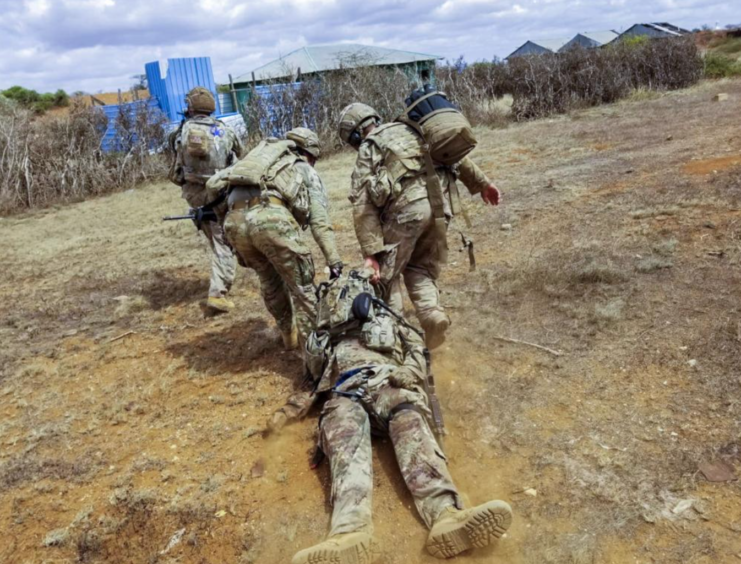
On September 30, 2019, members of the 102nd Cavalry were preparing a convoy to meet the chief of police and other leaders in a town 25 miles from Baledogle. At approximately 9:45 AM, they heard an explosion, which turned out to be the detonation of a vehicle-borne improvised explosive device (VBIED). The truck had been driving toward the airfield, but went off prematurely.
As the attack began, a UN aircraft was preparing to land and one manned by the US Air Force was about to take off. As well, 50 civilian construction workers were repairing the runway. The first course of action was to clear the area, so three soldiers were tasked with moving the civilians to safety, while the UN aircraft was diverted and the Air Force one told to immediately leave the area.
“I ran to the operations center and [Capt. London] Nagai was already maneuvering Charlie Troop toward the explosion site,” recalled Lt. Col. Richard Karcher, commander, Task Force Warrior. “He had the vehicles that were originally part of the convoy going to the airfield; he started moving additional personnel to the towers, which covered the approach to the airfield, and he closed all entry control points. Snipers were also posted base-wide.”
Members of the 102nd Cavalry ran to their positions both on the exterior of Baledogle and in the operations center, where they used cameras tethered to an aerostat to watch the base. As Nagai later explained, “The key was not engaging with the enemy until they were committed to utilizing a specific route that would ultimately be a fatal choice for them.”
They waited until the militants were right where they wanted them before launching their counteroffensive.
The then-largest VBIED used on the African continent

Ten minutes later, a second truck separated from a convoy carrying construction materials and drove toward the perimeter fence. The 102nd Cavalry fired at the vehicle, but their bullets couldn’t penetrate its reinforced, armored windows.
Luckily, before the attack, an engineer platoon had dug a trench around Baledogle’s outer boundary. It was designed to stop anything smaller than a tank—including the approaching truck. The vehicle got stuck in the trench, and the driver couldn’t reverse, giving the 102nd the chance to take it out.
Five minutes later, the truck exploded with the power of 4,000 to 5,000 pounds of explosives, making it the largest VBIED ever used in Africa at the time. The blast shook the base, ripped open a 200-yard-wide hole in the fence, and left a crater 20 feet deep.
A third truck hides 12 armed militants
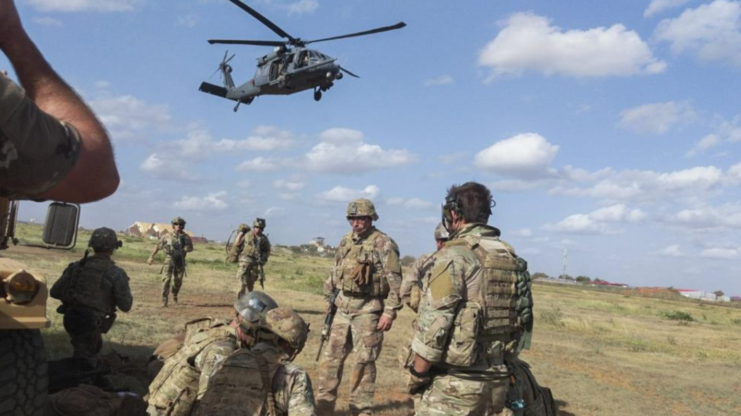
Around 10 minutes after the second truck exploded, a third truck arrived at the hole in the fence line, stopping just short of the large crater. The wind then blew off the tarp covering the truck bed, exposing a group of a dozen al-Shabaab militants, armed with PKM machine guns, hand grenades, assault rifles, RPG-7s and ammunition.
It seemed that the militants tried to get inside the perimeter, not directly outside it, and they struggled to regroup in the midst of the confusion. Almost immediately, snipers Staff Sgt. Nicholas Swanson and Sgt. James O’Brien opened fire, killing half of them in just five minutes.
As the remaining militants sought shelter behind their truck, Capt. Nagai and Lt. Col. Karcher made the decision to deploy their mortar team. A combination of 60 mm, 81 mm, and 121 mm weapons was fired, along with both indirect and direct fire against them.
It was over in less than an hour
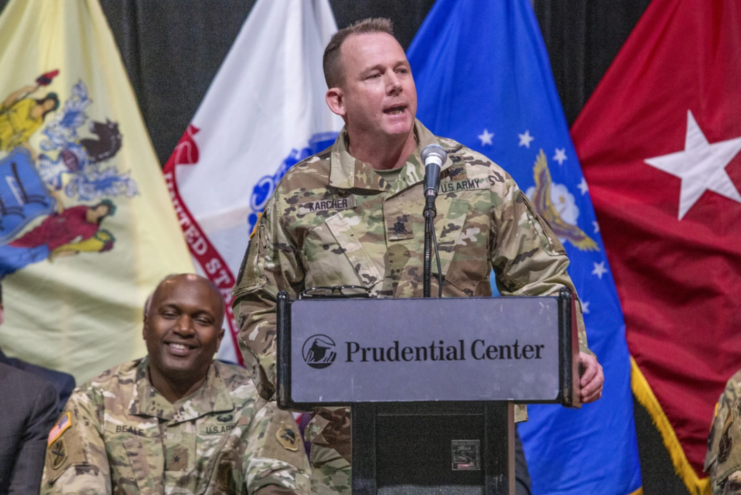
A ceasefire was later called, during which Lt. Col. Karcher’s team examined the third vehicle through the cameras set up around Baledogle. After consulting with a US Marine Corps unit assigned to the airfield, it was determined the truck was another VBIED, prompting the deployment of an Air Force drone to destroy it.
After less than an hour, the al-Shabaab militants had been completely wiped out. While the most recent press release states that none of the 102nd Cavalry’s members suffered injuries, a 2019 statement from US Africa Command (AFRICOM) did say a soldier suffered a concussion.
The engagement was the first time since the Second World War that a unit from New Jersey was involved in a combined arms battle, and it was the largest meeting between US forces and al-Shabaab since 1993’s Operation Gothic Serpent, which included the infamous Battle of Mogadishu. The latter was immortalized by 2001’s Black Hawk Down.
The day following the attack, al-Shabaab leadership published a letter and video online, claiming a decisive victory at Baledogle. This contradicted the real outcome, which saw the 102nd Cavalry secure a much-deserved win. However, as Karcher later said, “There is no question that if it hadn’t been for Charlie Troop, al-Shabaab would have destroyed the aircraft and killed as many people as possible.”
Militants opted to not launch any other attacks on Baledogle Military Airfield following the September assault. Seventy-six days later, on December 12, 2019, the 160 members of the 102nd Cavalry returned to the US.
The 102nd Cavalry Regiment are recognized for their actions
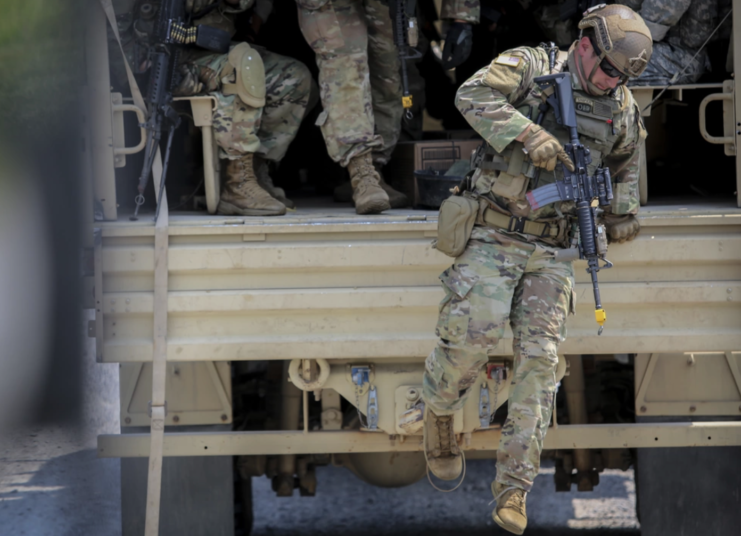
In the days following the engagement, members of the 102nd Cavalry were awarded the Combat Medical Badge, Combat Action Badge and Combat Infantry Badge, depending on their branch. Just under a year later, in August 2020, they received even more recognition at a ceremony at their home station in Westfield, New Jersey. During the ceremony, members were the recipients of Bronze Stars and Army Commendation Medals with Combat Device for their actions and bravery.
More from us: Operation Trent: The British Special Air Service’s Astonishing Daylight Mission in Afghanistan
Speaking about the bravery of those who fought the militants that day in September 2019, Capt. Nagai said, “The discipline and bravery of the Soldiers was something I will never be able to fully explain and something I am sure I will never see again.”
